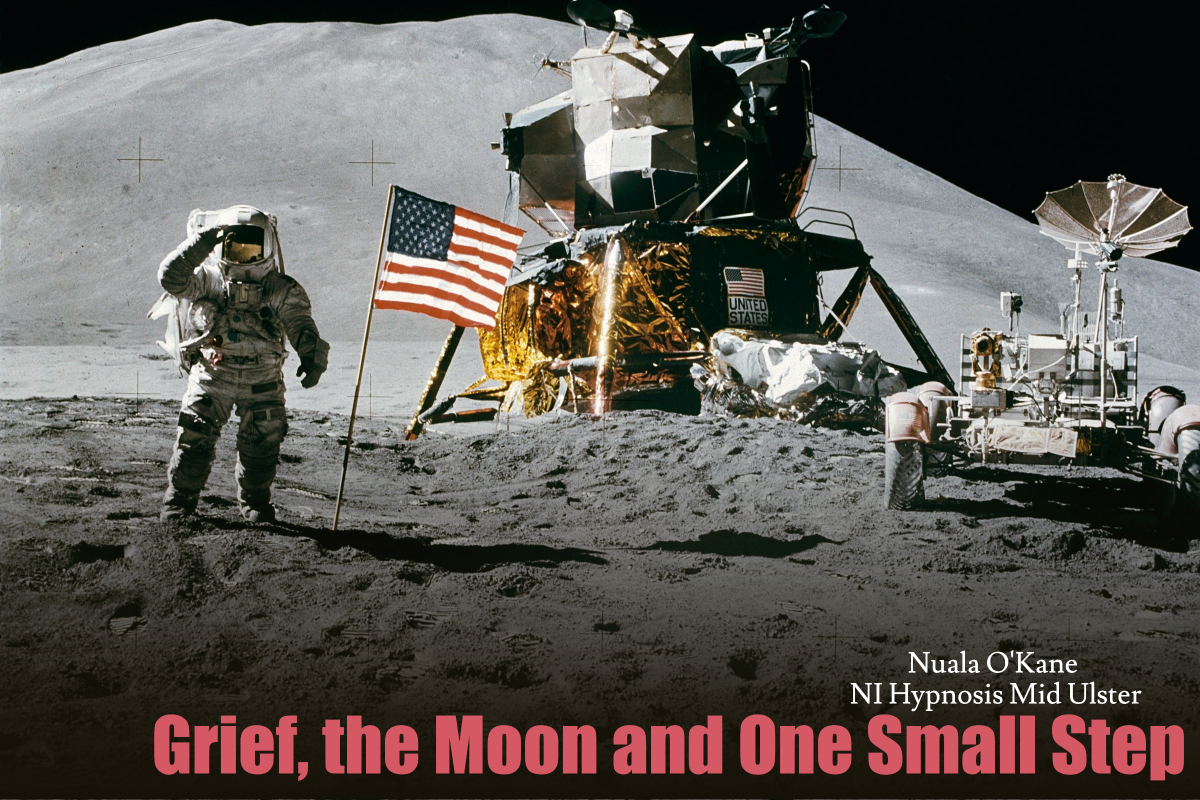On the 20th of July 1969, Neil Armstrong was the first man to walk on the moon, a feat witnessed by millions the world over.
What many of those millions of people watching may not have known is that while on the surface of the moon, Neil Armstrong turned off all communication with NASA and Earth, walked over to a crater on the moon and for 10 minutes stood on his own, just the moon, a vision of the earth and a man and his thoughts.
Before Neil left this earth he was required to give NASA a list of personal possessions he was taking with him, whilst he did not specifically name his items he stated he was taking two, whatever these two possessions were, they did not return to earth!
James Hansen, who wrote Armstrong’s autobiography, his wife Janet and Neils’s sister all have surmised that what Neil took with him and left behind was something belonging to his daughter or a reminder of her.
Karen Armstrong was 2 years old when she died, she had an aggressive brain tumour and complications resulting in pneumonia ended her short life on the 28th of January 1962. Karen was the Armstrongs second child and only daughter.
In the years proceeding Karen’s death Neil threw himself into his work, pushing himself to the very limits of his ability, time and time again, Neil not only stared death in the face, but in the few short years before the Moon Landing lost many colleagues, death it seems goes hand in hand with NASA, notified by THAT knock on the door, THAT phone call, something all to many of us are familiar with. From what I’ve read, and my own work on grief, I think after Neil lost his daughter he became slightly detached, numb, what made him so amazing at his job was the lack of fear of death, it had become an unwanted friend, there, always lurking in the background. Maybe on that historical night in July 1969 not only did Neil take one small step for man, but maybe one small step for him and facing his horrendous loss.
Elizabeth Kubler Ross initially wrote there were 5 stages of grief
Denial – Denying the inevitable, being in shock or numb.
Anger – Feelings of rage or resentment, anger can also be directed at loved ones
Bargaining – A lot of ‘what if’ or ‘if only’ statements
Depression – We may withdraw from life, engulfed in sadness
Acceptance – Our loved one is really gone
Sounds simple right, 5 stages to just go through and move on, only there is no specific time line, no orderly queue with which you wait to go through each stage in a timely organised manner, the reality can be, oh so very different. When a loved one dies the whirlwind of emotions can become too difficult to comprehend let alone reflect on and work through, the physical pain can be overwhelming, that constant ache within us, soul destroying!
During these first few months the autopilot can kick in, we can take care of the practical side of death, we can organise and do, funeral arrangements, registering the death, closing accounts, the list goes on. This gives us focus, a list of what to do. We can do this, we understand this, undertakers need paid for doing a job, a bank account is no longer needed, close it. Practical, logical, easy to get our heads around, most of the time. As those first few months pass and all practical matters have be dealt with, what then? Going through wardrobes, jewellery boxes, possessions, the reality of your loss slowly creeping in, they are never coming back, logically you know this of course you know this, so why when the door opens or the telephone rings, for a fleeting moment do we think it could be them? Because grief isn’t logical, that devastating feeling of loss cannot be explained away. Why is the world still turning? Why is everyone going about their business like nothing has happened? Don’t they understand that your world has just crumbled down around you, you are on your knees and you have absolutely no idea how you are going to begin getting back up again and there is that part of you that feels like you may not even want to.
Grief can be a tumultuous ebb and flow of emotion, some days are easier than others, but the days when the sadness is overwhelming, when it completely engulfs every part of your being, these are the days when grief is all we know, all we feel and all we see. Grief can be a very lonely place.
So, How can hypnosis help with grief? Hypnosis gives you time to sit with your grief and to work through it at a pace that you set. Hypnosis also lets you escape from the immense feelings that come with grief, for that moment in time you can be at peace. For me personally, the most instrumental, life changing benefit of hypnosis while grieving was, when sessions are completed, I was able to think if my loved one with a smile, thinking of them or special memories brought a smile to my face and not awful longing, that ache that robs us all of our memories. What better gift to give yourself, the gift of love and memories to replace pain and loss. This is where hypnosis can help.
This life can be wonderful and cruel and harsh and amazing but one thing we can all agree is that it is just too short, a fleeting moment in this universe of moments, so it is so important that we enjoy whatever time we have been given, don’t let grief steal our moments.
Hypnosis ‘one small step’!

